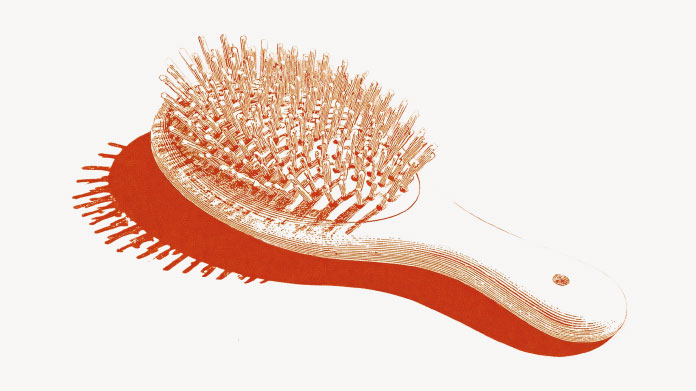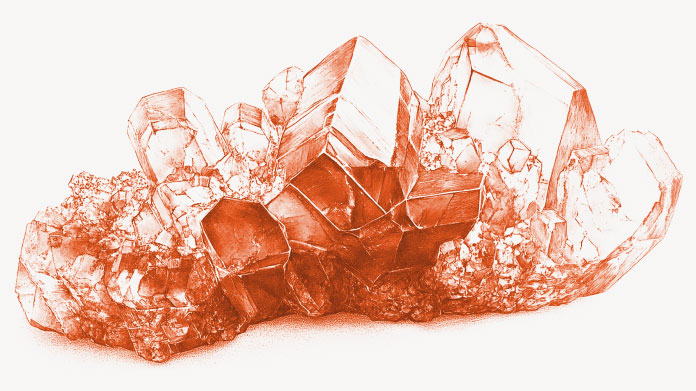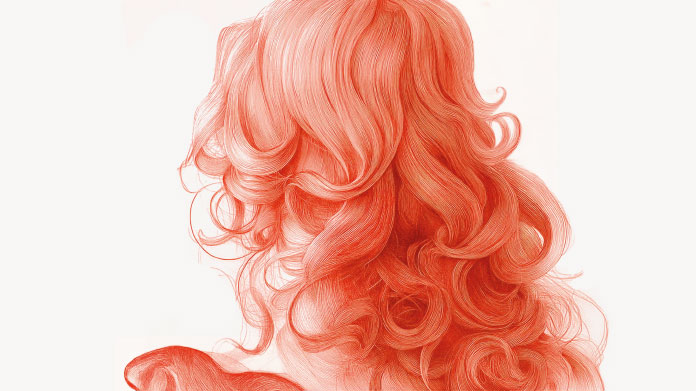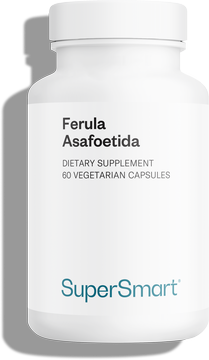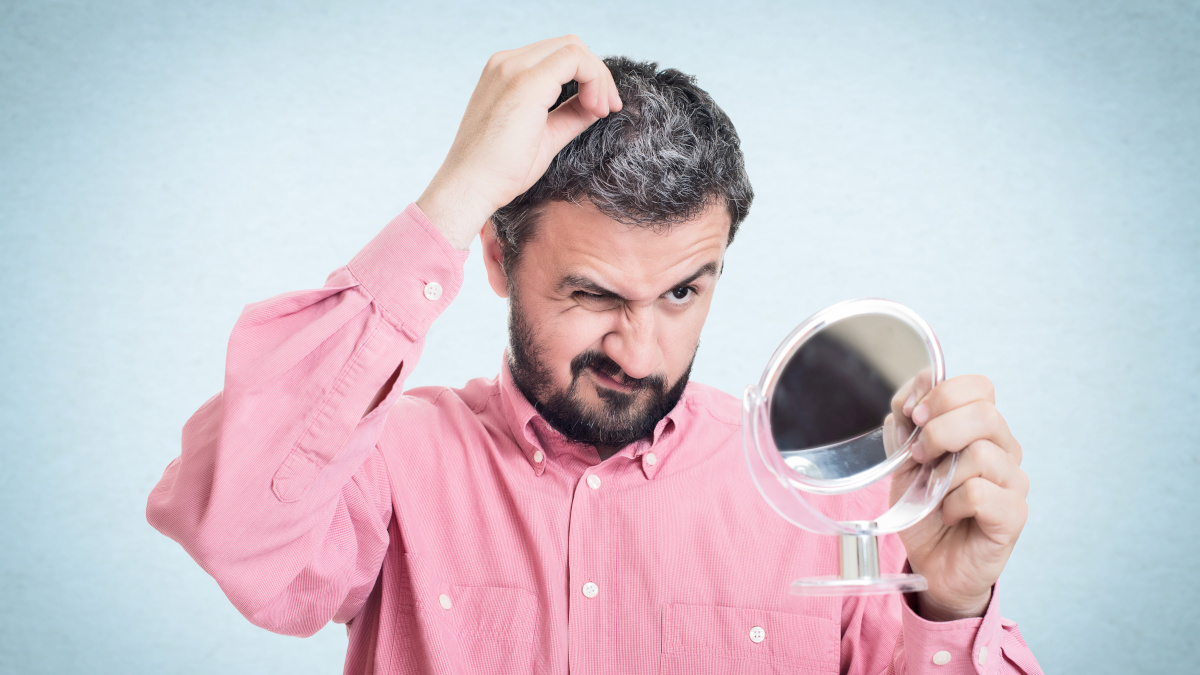
Why does hair turn grey (or white)?
Just like the skin and eyes, the hair is coloured by pigments belonging to the melanin family. In the absence of melanin, the hair and skin are white, as seen in albino mammals (1).
The main role of these pigments is to protect the skin, eyes and hair from ultraviolet damage.
This is why humans who have evolved in the world’s hot and sunny regions have dark skin, eyes and hair while those from colder, less sunny regions have fair skin, blue eyes and blonde hair. In fact, the type and amount of melanin an individual has is largely hereditary (2).
The melanin in hair is controlled by cells called melanocytes, interacting with keratinocytes, which themselves control hair growth. As long as melanocytes are healthy, hair growth will be blonde, red, brown, chestnut, etc.
However, as with any cell, melanocytes have a limited lifespan and we only have a finite amount of stem cells that enable them to be reproduced. Greying of the hair is a normal and unavoidable part of the hair ageing process (3).
Thus it is generally accepted that among Caucasian-type populations, 50% of the hair of those aged 50 will be 50% grey: with their melanocytes no longer totally functioning, part of their hair is coming through grey (4).
Grey hair: external factors to avoid
While greying of the hair is normal, it can be accelerated by oxidative stress(5). Melanocytes, like other cells in the body, are sensitive to free radical attack, which causes their premature demise.
It has thus been widely demonstrated that several factors encourage the hair to turn grey (6-8):
- excessive exposure to the sun;
- excessive exposure to air pollution;
- smoking and alcohol consumption;
- regular, excessive stress;
- anunhealthy diet high in fat, sugar, salt and highly-processed food, etc.
To stem the development of grey hair, it is therefore important to protect yourself against oxidative stress. For advice on how to do this, read our article 10 tips for combatting oxidative stress.
Copper: your no. 1 ally in the fight against grey hair
Essential for health, the trace element copper is normally obtained from food. This metal plays various roles in the body and is involved in numerous chemical processes.
First and foremost, copper helps protect cells against oxidative stress (9). It is thus involved in fighting the free radicals that attack melanocytes.
Copper also has a direct role in an enzymatic reaction essential for the production of melanin by melanocytes. Copper catalyses tyrosinase (10), in other words, it converts the amino acid tyrosine into melanin, the hair pigment. It thus supportsnormal pigmentation of the hair (11).
A balanced diet and supplements to restrict greying of the hair
As mentioned, copper is normally provided by the diet (from foods such as calves’ liver, lobster, squid, dark chocolate, kidney beans …), and in theory, the same goes for all the natural antioxidants the body needs to combat free radicals.
So to prevent grey hair, it’s important to eat a varied, balanced diet, with very few processed products or ready meals.
It’s also a good idea to include wholegrains, brewer’s yeast, almonds, hard-boiled eggs, chicken livers, nuts and brie : all these foods are actually high in vitamin B8, or biotin. Biotin (which is available in our supplement Biotin), helps maintain healthy hair (12).
Try to boost your diet by incorporating oysters, rye bread, cocoa powder, cashew or pine nuts and parmesan, all of which are rich in zinc, a trace-element which also helps to maintain healthy hair (13). To boost your zinc intake, you could opt for a zinc supplement (such as Advanced Zinc Lozenges).
There are also specific synergistic formulations that combine various natural, beneficial compounds. They include Grey Hair Formula, rich in biotin and zinc, as well as copper for pigmentation, saw palmetto extract and proanthocyanidins, or Hair & Nails Formula, which combines biotin, copper, zinc, solubilised keratin, etc. For healthy hair in general, we’d also recommend Keranat, rich in zinc, vitamins and plant extracts.
References
- KING, Richard A. Albinism. Neurocutaneous Diseases, 1987, p. 311-325.
- SHI, Yuguang. Beyond skin color: emerging roles of melanin-concentrating hormone in energy homeostasis and other physiological functions. Peptides, 2004, vol. 25, no 10, p. 1605-1611.
- COMMO, S., GAILLARD, O., et BERNARD, B. A. Human hair greying is linked to a specific depletion of hair follicle melanocytes affecting both the bulb and the outer root sheath. British Journal of Dermatology, 2004, vol. 150, no 3, p. 435-443.
- PANHARD, S., LOZANO, I., et LOUSSOUARN, G. Greying of the human hair: a worldwide survey, revisiting the ‘50’rule of thumb. British Journal of Dermatology, 2012, vol. 167, no 4, p. 865-873.
- SEIBERG, M. Age‐induced hair greying–the multiple effects of oxidative stress. International journal of cosmetic science, 2013, vol. 35, no 6, p. 532-538.
- TRÜEB, R. M. The impact of oxidative stress on hair. International journal of cosmetic science, 2015, vol. 37, p. 25-30.
- TRÜEB, Ralph M. Oxidative stress in ageing of hair. International journal of trichology, 2009, vol. 1, no 1, p. 6.
- GOODMAN, B. A. et HILLMAN, J. R. Oxygen, free radicals, antioxidants and food-some views from the supply side. Grop Res. Inst. Dundee, 2000, p. 83.
- URIU-ADAMS, Janet Y. et KEEN, Carl L. Copper, oxidative stress, and human health. Molecular aspects of medicine, 2005, vol. 26, no 4-5, p. 268-298.
- FUJIEDA, Nobutaka, UMAKOSHI, Kyohei, OCHI, Yuta, et al.Copper–Oxygen Dynamics in the Tyrosinase Mechanism. Angewandte Chemie, 2020, vol. 132, no 32, p. 13487-13492.
- Flesch P. The Role of Copper in Mammalian Pigmentation. Proceedings of the Society for Experimental Biology and Medicine. 1949;70(1):79-80. doi:10.3181/00379727-70-16831
- LIPNER, Shari R. Rethinking biotin therapy for hair, nail, and skin disorders. Journal of the American Academy of Dermatology, 2018, vol. 78, no 6, p. 1236-1238.
- MCBEAN, Lois D., MAHLOUDJI, Mohsen, REINHOLD, John G., et al.Correlation of zinc concentrations in human plasma and hair. The American journal of clinical nutrition, 1971, vol. 24, no 5, p. 506-509.\
5 Days
Delivery is prompt and I never saw a…
Delivery is prompt and I never saw a quality problem with the manufacturing. It is not possible to assess efficacy on a personal basis, since too many factors come into play. Efficacy can only be assessed statistically with a sufficient number of cases.
Roger De Backer
6 Days
I collaborates with the Supersmart…
I collaborates with the Supersmart more than 10 years. Every thing is going good. Quality of the things is good. Delivery comes in time. Five stars definitely !!!
Oleksiy
6 Days
All good
Simple, frictionless site, easy ordering, good delivery updates and execution.
Chris Robbins
8 Days
I feel better
I feel better
Peter Ammann
9 Days
Prompt delivery
Prompt delivery
JAKUB Radisch
10 Days
My new go-to for top quality supplements!
I am buying more and more of my supplements from this superb, high quality company. Cannot recommend it enough. Plus, excellent customer service with a quick, helpful team and speedy deliveries. Highly recommend Supersmart!
Cecilie H.
14 Days
SUPERSMART WHAT ELSE👍
SUPERSMART WHAT ELSE👍
DIEDERLE Christophe
16 Days
Excellent quality products with…
Excellent quality products with innovative formulas, as someone who has been suffering with acid reflux, these supplements have been lifesavers.
Oriana Moniz
17 Days
high quality supplement!
high quality supplement!
GALANT
17 Days
Good service prompt delivery
Good service prompt delivery
Mrs Marcella Reeves
22 Days
I like your clear explanation
I like your clear explanation. And how to make a choice of products for a specific health problem
Ingrid
28 Days
Great product and it arrives quickly.
Great product and it arrives quickly.
SOMMARIVA Gianni
30 Days
Excellent products and fast service.
Excellent products and fast service. What do we need more?
Margarida
34 Days
The variety of products is amazing
The variety of products is amazing, the offers are good and the sending is very fast. I just miss having a bit more of guidance about combinations, possible interactions, etc.
Maria Angeles Verdu
35 Days
It was quick
It was quick.
Timo Antero

